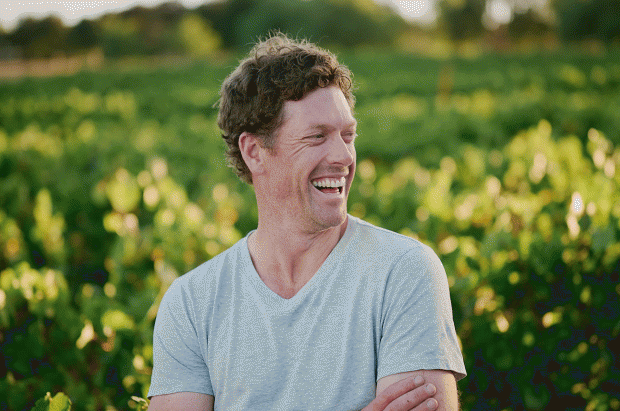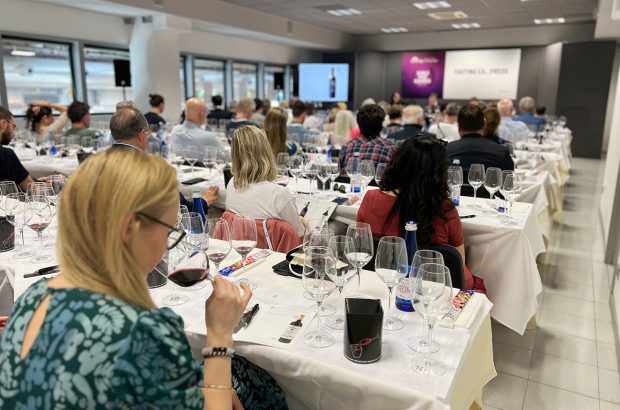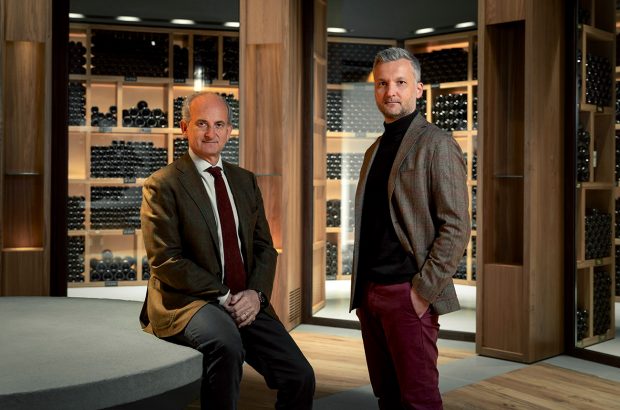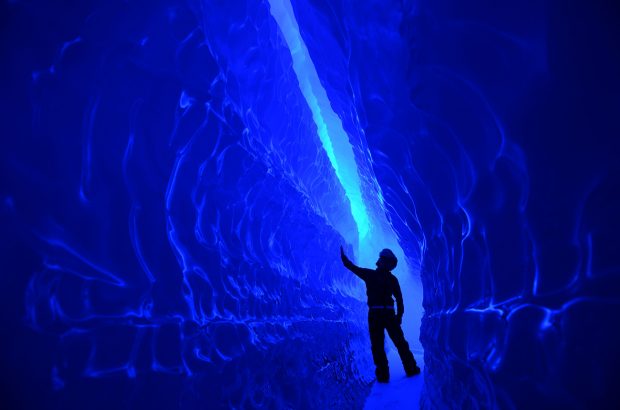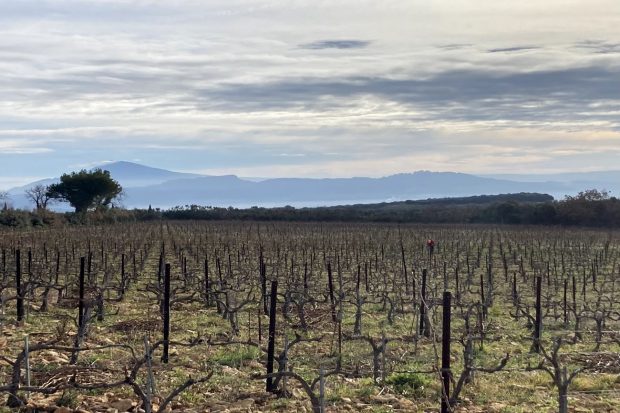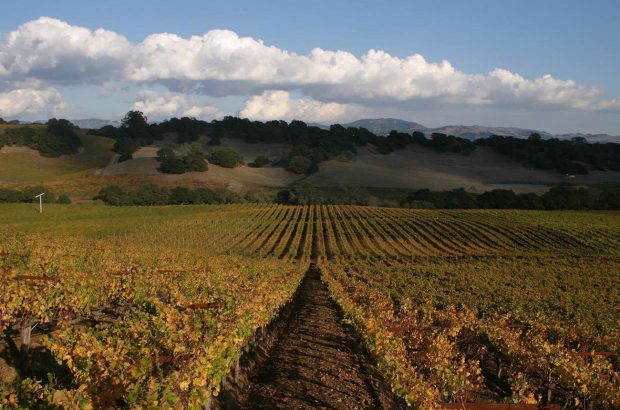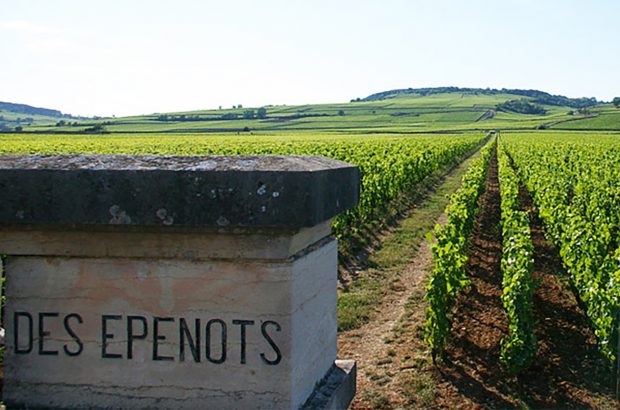Stretching some 1,500km from the Czech Republic and Austria to Serbia, passing through Hungary, Poland, Slovakia, Ukraine and Romania along the way, the Carpathian mountains are Europe’s third-longest mountain chain after the Urals and the Scandinavian mountains. These majestic and mysterious mountains have arguably played as significant a factor in the development of the region’s history and culture as Europe’s second-longest river, the Danube, and the encroachment and retreat of empires Roman, Ottoman and Habsburg, not to mention the more recent impact of the Soviet era. They also have a remarkably long winemaking tradition, dating back several thousand years.
The Carpathian foothills experience a relatively mild climate with plenty of both rain and hot, sunny days, while also possessing a diversity of volcanic soils, and today they represent a versatile paradise for wine lovers, where the ancient art of winemaking is grandly celebrated. In this wine haven, the old ‘New World’ of varieties such as Furmint, Welschriesling, Kadarka, Kékfrankos and other discoveries await, along with rich historic cultures, breathtaking landscapes and the broadly undiscovered wine scenes of central Europe. With only a small percentage of the local wine leaving its respective countries, there’s a vast tapestry of labels waiting to be explored.
For wine enthusiasts, an excellent way to discover this expansive area is by visiting one or more of the region’s regular wine festivals. Many of the countries through which the Carpathians pass saw their wine industries suffer during the communist era, and today, as they work to rebuild and expand, there’s a palpable enthusiasm and desire to share the local traditions with the wider world.
Slovakia, Romania, Poland and Hungary would all make great places to start, each home to millennia-old winemaking cultures that are keenly re-emerging after shrugging off the communist cloak and each hosting a number of annual festivals, a selection of which are presented here.
Slovakia

The historical wine town of Svätý Jur, near Bratislava, seen from surrounding vineyards in the foothills of the Small Carpathians. Credit: Volkerpreusser / Alamy Stock Photo
Chute Malých Karpát 2024
Event date: 9 November
Set among sprawling vineyards and charming traditional villages in a particularly picturesque part of southwestern Slovakia, the Taste of the Small Carpathians festival is a wine lover’s paradise, boasting a distinctive ambience and offering an excellent opportunity to get under the skin of Slovakian winemaking traditions.
The town of Svätý Jur, whose wine-related history dates back to the beginning of the 13th century, sets the stage for this celebration of the local region’s exceptional wines and cuisine. The vineyards, which are the most extensive in the Small Carpathian wine region, reaching right up to the town’s fortifications, reflect a terroir that’s particularly well suited to Riesling, imparting a distinctive mineral character to the wines.
In the Small Carpathians wine region, the slopes of the foothills, predominantly composed of granite and other volcanic rocks mixed with areas of sandy soil, provide an ideal environment for nurturing resilient vines. With most of the slopes facing in a southerly direction, the often terraced vineyards are regularly bathed in sunlight, ensuring regular ripening. While white wines tend to dominate, the region also produces some characterful cool-climate reds.
The brainchild of nine local producers, the festival’s set-up enables visitors to explore wineries via a shuttle bus, engaging directly with winemakers and savouring local wine, food and art, with immersive programmes that range from musical performances to cellar tours. Start by exploring the wine towns and villages of Svätý Jur, Modra, Pezinok, Šenkvice, Dol’any and Suchá nad Parnou.
Today, at least 38 wineries participate in the festival, each showcasing something of its own, whether it’s a distinctive grape variety, a modern winemaking technique or a traditional family recipe. Viajur winery, situated in Svätý Jur’s historic and recently rebuilt Pálffy manor house, is a must-visit, especially if you are in search of local history and culture. The winery masterfully revives the Habsburg culture, echoing the times of the Austro-Hungarian Empire with its outstanding architecture and an impressive art collection. Terra Parna winery, in Suchá nad Parnou, is another highlight, offering a fusion of tradition and modernity, the newly built winery nestled among 3.5ha of vineyards.
The festival also provides a platform for local artisans to showcase their work – from traditional crafts to contemporary art – while local chefs are on hand to serve up a delectable array of dishes that complement the region’s wines with aplomb.

Riesling poured with plates at Arte restaurant, Pálffy manor house
Accommodation: The Pálffy manor house, parts of which are thought to date back as far as the 13th century, has a number of well-appointed rooms.
Dining: The manor house also has two dining options: the Arte restaurant, which offers a choice of two tasting menus; and the elegant Habsburgs Lounge, where you can sample Austro-Hungarian cuisine surrounded by portraits of members of the Habsburg dynasty.
Nearest airport: Bratislava – the festival is roughly 30 minutes by car from the airport.
Romania

Past Rovinhud Wine Show speaker (and DWWA Regional Chair for Provence) Rod Smith MW
Rovinhud Wine Show
Event date: 15-17 November
This Romanian wine fair is held in Timișoara, a pretty little boulevard city rich in heritage. Indeed, it was one of three cities given the title of European Capital of Culture in 2023. Advocating inclusion and equality, while supporting a humanitarian foundation, this is more than just another wine event. The charity behind the scenes is Ceva de Spus, an organisation committed to championing the rights of disabled children and young adults living in impoverished conditions, which remains a persistent problem in Romania. In 2023, the event raised €57,500.
Held over three days, the Rovinhud show features at least 100 wineries from across the country, providing an excellent opportunity to explore Romania’s diverse wine scene. Apart from great wines, the fair also features masterclasses presented by internationally recognised wine experts. Past speakers at the event have included Jancis Robinson MW OBE, Julia Harding MW, Caroline Gilby MW, Yiannis Karakasis MW, Elizabeth Gabay MW, Dr José Vouillamoz and Rod Smith MW, to name but a few.
Among the wineries to look out for at the festival are Balla Geza for its championing of indigenous grapes and smart use of oak; Agape, which represents the modern face of Romanian winemaking, masterfully blending art and terroir; father and son outfit Crama Aramic for easy-drinking wines; Nachbil for something deliciously unique and organically farmed; and Cramele Recas, Romania’s largest and most prominent wine exporter, for consistently outstanding quality.

The late 1930s-built Timișoara Romanian Orthodox cathedral and the night lights of the city centre. Credit: Adrian-Catalin Lazar / Alamy Stock Photo
Accommodation: Atlas Hotel Timișoara, a boutique hotel located within walking distance of the festival.
Dining: The aptly named Restaurant Merlot, located in the historic Neptune Palace near Decebal bridge offers a calm and relaxing atmosphere, serving high-end European and fusion cuisines.
Nearest airport: Timișoara – the venue is a 15-minute car ride from the airport; public transport links are available.
Poland

Tourist crowds in Castle Square, central Warsaw. Credit: Aliaksandr Mazurkevich / Alamy Stock Photo
Warsaw Wine Experience
Event date: 17-18 November
Email: er@winicjatywa.pl
Forget vodka! Poland is home to more than 400 wineries producing an impressive total of two million bottles a year. The country’s increasingly diverse wine landscape stretches across all 16 of its administrative regions. And despite the cooler climate, Polish vineyards, including those along the Baltic sea coast near Szczecin, are thriving. From a small start – in the 2009-2010 season, just 21 vineyards declared their intent to release wine – the value of the country’s wine market is growing by roughly 10% per year.
From innovative PIWI vines (hybrid varieties resistant to threats such as parasites, fungi or frost) to ingenious varieties such as Solaris, Rondo and Regent, and on to the more familiar Riesling and Merlot, Poland’s vinous offerings cover a broad spectrum of styles and may soon rival the diversity of cool-climate peers such as England and Belgium. And, with lower land prices and production costs than Western counterparts, larger wineries offer very competitive prices.
The annual Warsaw Wine Experience offers visitors a deep dive into the world of Polish and international wine. The event, which took place for the first time in 2019 and is held each October in the heart of Poland’s vibrant capital city Warsaw, is about much more than just wine tasting, offering a comprehensive wine education experience through a mix of seminars, workshops and masterclasses. However, there’s plenty of wine tasting to be done as well, with more than 150 exhibitors showing a mix of local wines and bottles from as far away as China and beyond.

Restauracja Future & Wine
Accommodation: The elegant and sophisticated Nobu hotel hosted the Warsaw event in 2023. It’s conveniently located in the heart of the city’s residential district, which is graced with gorgeous pre-war buildings as well as stores, food halls and galleries.
Dining: The award-winning Restauracja Future & Wine, located 12 minutes’ walk from the event, combines elements of Polish and wider European cuisine.
Nearest airport: Warsaw Chopin – the wine festival is a 10-minute car ride away.
Hungary

The Borfesztivál outside the newly reconstructed Királyi Lovarda royal riding hall, completed in 2021. Credit: Szigetváry Zsolt
Budapest Borfesztivál
Event date: 12-15 September
Hungary’s wine offering is a rich tapestry, ranging from the luscious Tokaji Aszú to the rich reds of Eger and Villány via a vast collection of unusual grape varieties, including Furmint, Kadarka and Kékfrankos – just three of 97 white and 40 red varieties officially grown for wine in the country.
varieties officially grown for wine in the country. The Budapest Wine Festival is the perfect occasion for English-speakers to capture the essence of Hungary’s wines. The festival, now in its 33rd edition, began in 1992 with just a few hundred attendees but currently attracts more than 10,000 wine and food enthusiasts. It’s one of Central Europe’s most beautiful outdoor wine events, where attendees are invited to taste award-winning Hungarian and international wines. Special guests from lesser-known regions (such as South America in 2023) add variety to the wine offerings.
Beyond wine (bor in Hungarian, hence the name), the festival offers attendees a culinary adventure in the Chef Market Gourmet Food Court, which features everything from street food to Michelin-starred restaurant pop-ups and local specialities. There is also a range of concerts, cultural programmes and interactive workshops.

Credit: Wellyou.hu
Accommodation: Baltazár Boutique Hotel, or Buda Castle Fashion Hotel, each a 10-minute walk from the festival.
Dining: Michelin one-star Borkonyha Winekitchen, whose award-winning wine list features a mix of Hungary’s best-known and more obscure offerings, as well as international classics, with numerous by-the-glass options. Tasting menu and premium wine pairing available. Or N28, a must for foodies and wine lovers – owned by two winemakers, this consistently well-reviewed restaurant is a hidden gem in the middle of downtown Pest, right in the city centre.
Nearest airport: Liszt Ferenc – the festival is a roughly 45-minute car journey from the airport.






